| 1 | Slender burrowing asp |
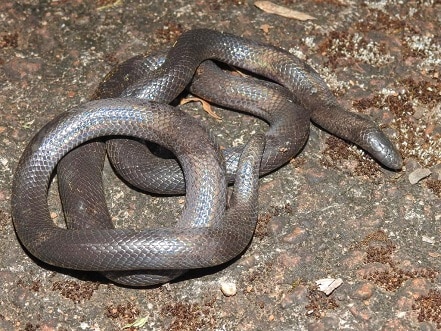
A venomous African snake which is seen less in towns and public parks than cobras, mainly because they’re keen burrowers. Atractaspis aterrima lurks in coastal forests, grasslands and moist savannahs, where they dig into soft soils and vanish completely from sight, only emerging after heavy rains. They accomplish this using a special head which narrows after the neck instead of enlarging. Combined with a shovel-shaped snout, this makes Atractaspis aterrima like a living breathing spade, which shifts soil aside as effortlessly as a construction worker’s digger.
This is a venomous species, whose toxins include sarafotoxins, three-finger toxins and lipocalins. There’s an abundance of cardiotoxins which cause vasoconstriction, but because they lead a burrowing lifestyle, bites are rare, mainly happening when picked up out of curiosity.
This snake reaches a maximum of 81cm in males, and 71cm in females. They’re part of the Atractaspis family, which has 15-23 members. These are collectively called the side stabbers, as they’re unique among venomous snakes for having a single venomous tooth which points sideways. This allows them to slash at enemies and inject venom with their mouth completely closed, and inspires shudders among locals. The most feared is the stiletto snake of South Africa, while the slender burrowing asp lives in west Africa, including Ghana, Ivory Coast and Nigeria.
| 2 | Western shovelnose snake |
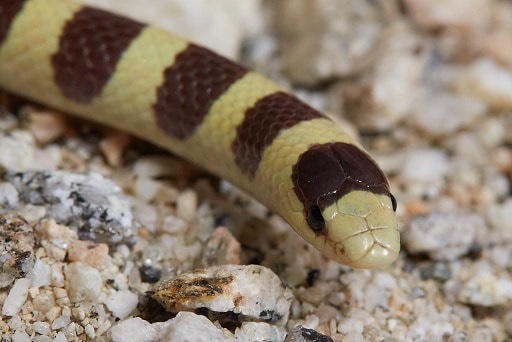
This species lives in the vast desert expanses of southern Nevada, Arizona, and northern Mexico. It’s called a shovel nose because that’s what it has, and it uses it to dig into soft sands and escaping the blazing desert sun. Western shovelnose snakes are no threat to humans, and are normally found between desert shrubs, half covered in sand. They measure 25-43cm and mainly feed on scorpions and insects.
Its snout is long and probing, thinning from its jaws, and can poke an initial hole into sand which its body then enlarges moments later. This snout gives them a docile appearance, rather than like a menacing brute. Appearances can deceive with snakes, but in this case, they really are friendly.
Having a shovel snout is a matter of life and death, not style. It’s one of many adaptive features Sonora occipitalis uses to endure in scorching deserts, where a copperhead would shrivel up and go crispy within hours. They have to burrow below for shelter, or the western shovelnose is finished. They could theoretically invade a mammal burrow, but having a slender snout allows them to dive below whenever they want. As you’d expect, this snake sticks to softer sands rather than hard packed ground.
| 3 | Middle American burrowing snake |
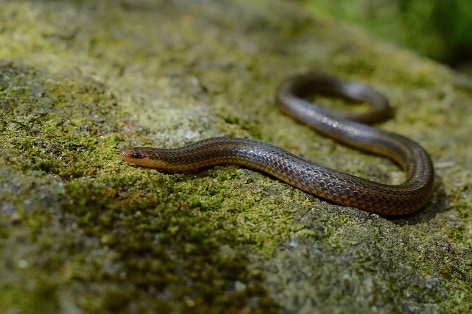
For all their venom, all their bravado, if an India cobra ever needed to dig itself out of a collapsed burrow filled with soil, it would be in big trouble. The middle American burrowing snake has no such worries. This species lives in Honduras, and is in completely control in its underground soil domains. They move through soil as effortlessly as an olive sea snake moves through water, and it’s all down to their snout, which is narrow and tapering.
As long as the soil is loose enough, this snout allows them to burrow with ease. They don’t even have to think, with natural digging instincts honed over millions of years. Middle American burrowing snakes (Adelphicos quadrivirgatum) are completely harmless and measure just 30cm. They live in lowland forests rather than high altitudes, and being smaller, they get pushed around a lot, with even spiders such as dark fishing spiders feasting on them.
Luckily, Adelphicos quadrivirgatum has an escape route, digging down with their specialised snout. Their diet is also specialised for a digging life, being mainly earthworms. Middle American burrowing snakes don’t spend all their time underground. They’ll sometimes climb a few feet and rest on a large rainforest leaf. They’re most common by streams in forests, where the soft soil prevents infinite opportunities.
| 4 | John’s sand boa |
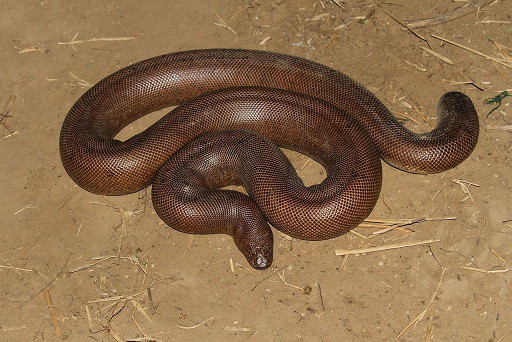
The sand boa family are all expert diggers, and John’s sand boa (Eryx johnii) is no exception. This version lives in India, where superstitious beliefs surround it such as curing AIDs and blessing those who meet it with good luck. It’s a weird enough snake already, with round eyes that look permanently startled, and a stubby cylindrical body. Their stumpy, angled snout is the final piece of weirdness, and this goes to the very real purpose of digging in loose soils.
John’s sand boa digs for hunting purposes as well as shelter, leaping out at passing mammals in ambush, which they then constrict like a typical boa. Their main hotspots within India are rocky foothills and semi-desert scrub plains. Hard soil is a no-no for Eryx johnni. If they woke up with a normal snout one morning, they wouldn’t be able to survive.
John’s sand boa have the usual spade-shaped snout, but even better, their snout angles downwards slightly. This snake doesn’t just dig, it needs to dig down instantly, hiding its boa body the moment it senses a rodent coming. Eryx johni is also called the red sand boa. Their recognisable physical feature is a wide black bands which increase in vividness towards the tail. Their snout, meanwhile, is a steel grey colour.
| 5 | Short-tailed snake (Florida) |
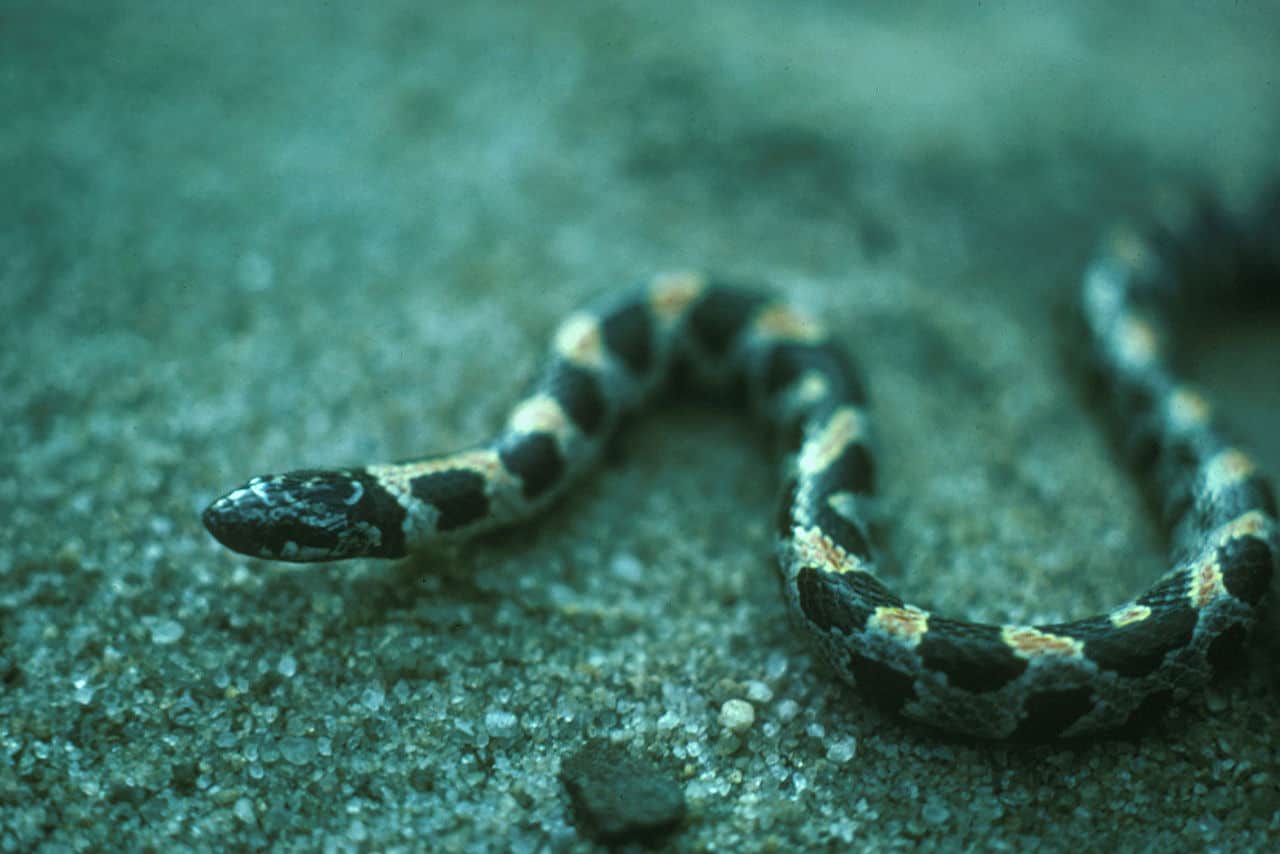
A Florida snake, but not one you’re likely to find in Publix or the Magic Kingdom car park. The short-tailed snake lives in clumps of dry forests well away from prying human eyes. Here, they live a digging lifestyle, vanishing into soft soils, using a slender snout which shoves aside soil with ease.
Lampropeltis extenuata has no desire to attack humans. Escape is their default, and instead of zooming into thickets, they travel downwards. Specifically, this snake is restricted to turkey oak woods, oak hammocks and sand pine scrub. They’re highly endangered, and live mainly in the central counties of Florida. Short-tailed snakes belong to the same Lampropeltis family as king snakes, which are decent burrowers themselves. But Lampropeltis extenuata outstrips its remaining family members. It became isolated from other kingsnakes during the Miocene epoch, and it used this isolation to gain a thinner head for burrowing.
At no point is a short-tailed snake’s head thicker than its neck. Just a few extra millimetres could impede its digging ability and leave them open to certain doom, removing their one great survival advantage – vanishing instantly. Short-tailed snakes are a short species, measuring just 36-51cm.
| 6 | Rhinophis melanoleucus |
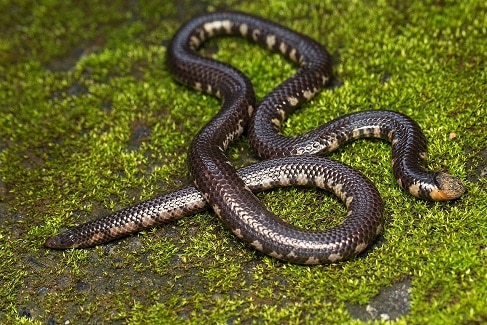
The Rhinophis snake family lives in India and probably has the most extreme burrowing adaptions of any snake. Their head is so narrow that it points to a spike, while its tail looks like a wooden chair leg which has snapped off, probably to fool predators into thinking this is its head. Rhinophis snakes (which have 24 members) construct an intricate soil tunnel network in the rainy season while the ground is wet. But they don’t occupy them straight away. They wait for months until the ground hardens, and only then they set up their underground base. They can dig 2 metres below ground, sustain this digging for long periods, and some have special polygonal scales which protect their eyes.
Rhinophis melanoleucus lives in the western Ghats mountain range of southwest India, a hotbed of rare species (like the Malabar civet). They were first discovered in 2020, near tea and coffee plantations at 750-850 metres in altitude. One was dug up from 0.5 metres below ground by a construction vehicle.
This species measures 40-50cm, and differed from other Rhinophis members by its black and white colours, but its snout was just as supremely adapted for digging. The Rhinophis family is so bizarre that British scientists in the 1800s didn’t realise they were snakes at first. They were originally assigned to the legless lizard family of Anguis.
| 7 | Narrow-banded burrowing snake |

An Australian snake which digs tunnels during the day and emerges on warm nights to hunt for small reptiles. This is mainly a species of central and western Australia. They’re found in civilised New South Wales, but only the far west, nowhere near Sydney.
Narrow-banded burrowing snakes like dry, sandy habitats. Spinifex dunes are a favourite, as are arid semi-deserts, dry grassland and savannah. This species doesn’t have a scary face; it isn’t snarling and crocodilian like a green tree python. Instead, they have a narrow snout, which is perfect for poking sharply into sand then shovelling the rest aside. Brachyurophis fasciolatus simply aims its head downwards and disappears below the surface of Australia. Finding this snake is difficult, as you first have to find their remote habitats, and then get lucky and have them come to the surface.
This species occupies a swathe of Australia’s scorched interior and likes areas with little human population. Consequently, they’re not endangered at all. Their favourite prey are comb-eared skinks and sliders, legless skinks which resemble skinks themselves.
| 8 | Mozambique shovel snout |

A harmless snake which poses no threat to humans. The clue is in the name, as this southern African snake has a narrow snout specialised for digging.
Mozambique shovel snouts (Prosynma janii) prefer to stay in the upper layer of soils, rather than burrowing deep into the Earth’s fiery mantle. But this is more than sufficient to hide them away. This species measures just 25cm, and mainly preys on reptile eggs. They’re based in southern Mozambique and eastern South Africa, but they’re hard to find even on the most dedicated reptile hunt.
Mozambique shovel snouts are found in coastal forests, moist savannah, and roads through them. If cornered, then Prosynma janii doesn’t need a log or burrow to hide in, as it can dive down instantly. Though less flashy, this is just as useful as a neurotoxic venom which destroys birds’ brains. Cobras are powerful, but they’re so cocky that every hawk and eagle in South Africa knows where they are. The Mozambique shovel snout is subtle and can disappear into soil, leaving its predators confused, questioning their own sanity.
| 9 | Colombian earth snake |
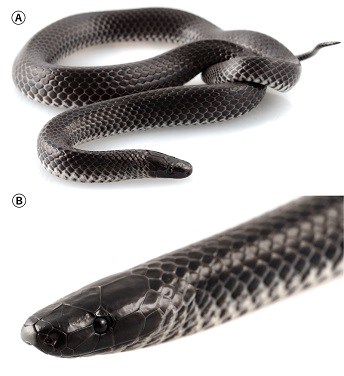
A 50cm snake of the western Andes in Colombia, which lives a secretive life. Geophis nigroalbus was first discovered in 1909, but over the next 100 years, less than 50 more were found. The reason is its love for burrowing, which is made possible by its tapering head and shovel-shaped snout.
Originally, Geophis nigroalbus was probably a normal snake, but found itself outcompeted by acrobatic showoffs like the tiger ratsnake. Geophis nigroalbus couldn’t survive by being a fast, aggressive snake, so it morphed into a shy burrower instead, choosing the world below which more energetic snakes didn’t care about.
Geophis nigroalbus doesn’t look scary at all. It has round inquisitive eyes and looks mild mannered. A boa constrictor would surely have no fear at all, and laugh as it moves in for the kill. But the joke’s on the boa, as Colombian earth snake’s head is built purely for function, and gives it a huge burrowing advantage, which allows it to escape enemies whenever it feels like it.
This species overlaps with Hoffman’s earth snake in Columbia, but this version is smooth, while the Colombian earth snake has sharply keeled scales (except on the neck).
| 10 | Western hognose snake |
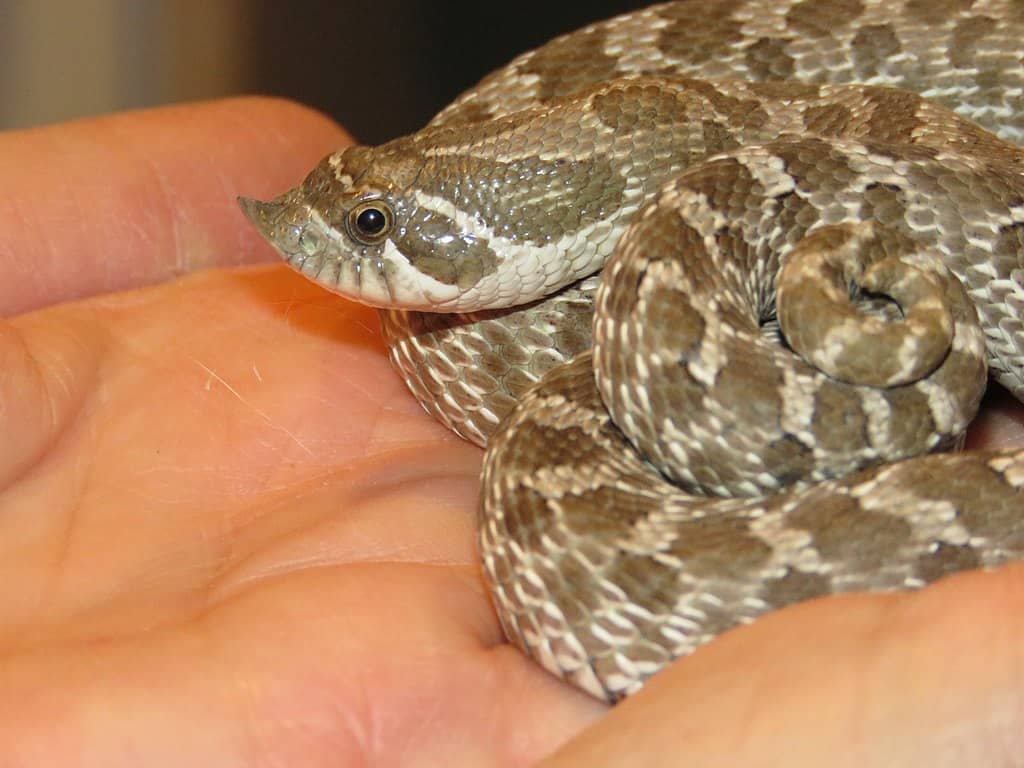
This easily recognisable species lives in the great plains of the US, as well as southern Canada and far northern Mexico. Just one look at a western hognose snake, and you know that they’re excellent diggers. They love sweeping plains, but especially sandy blowouts and dunes within those plains. Western hognose snakes roam around these sandy zones all day, digging when the need for shelter strikes, in their mysterious reptilian brains.
According to one study, western hognose snakes spend 71% of their time underground. They also do much of their hunting underground. Over 50% of their diet is eggs, whose hollows they must raid. The western hognose snake has a relatively upturned hog-nose, whereas in the eastern species, it’s more horizontally facing. Other weird anatomical features include ultra large back teeth. These were theorised to be for popping amphibians’ inflated bodies, but they’re actually for gripping them.
Western hognose snakes are mostly harmless. They secrete a mild venom, which may cause fingers to swell, but won’t kill unless a severe allergic reaction strikes.
